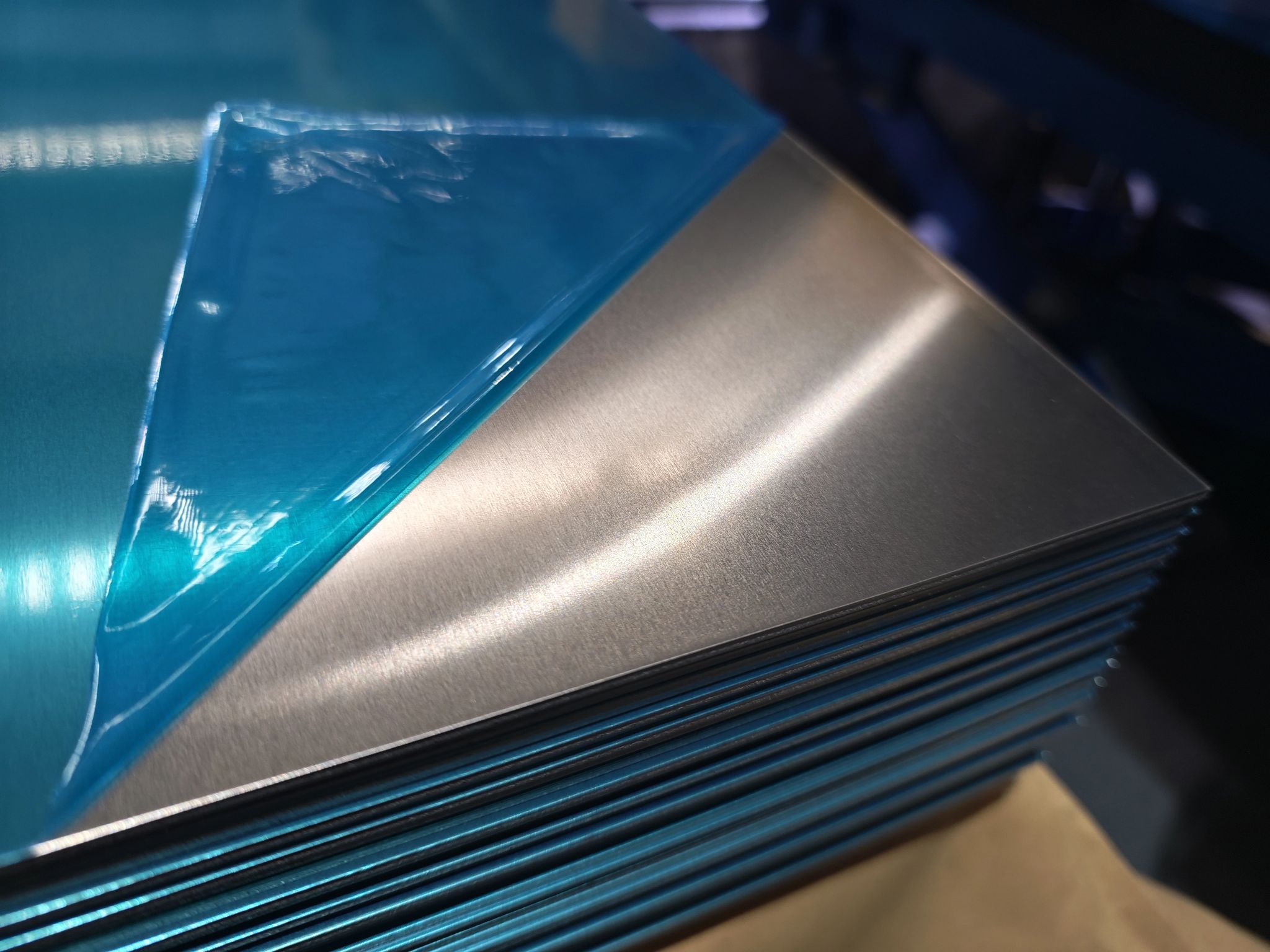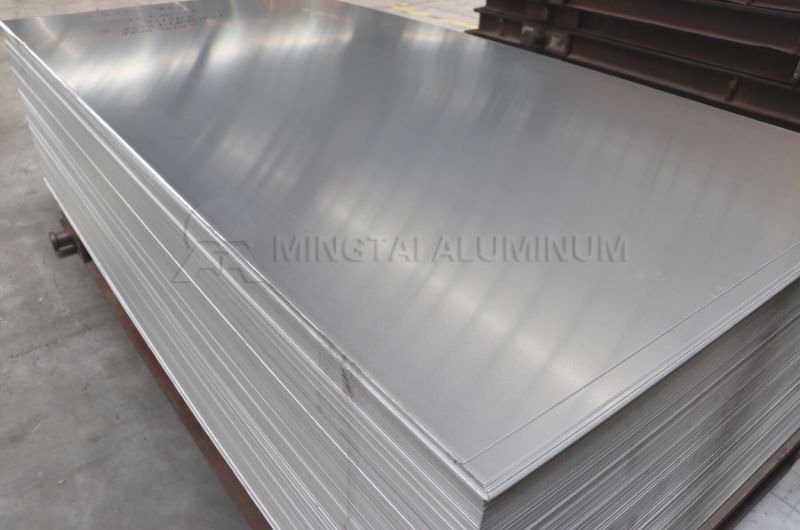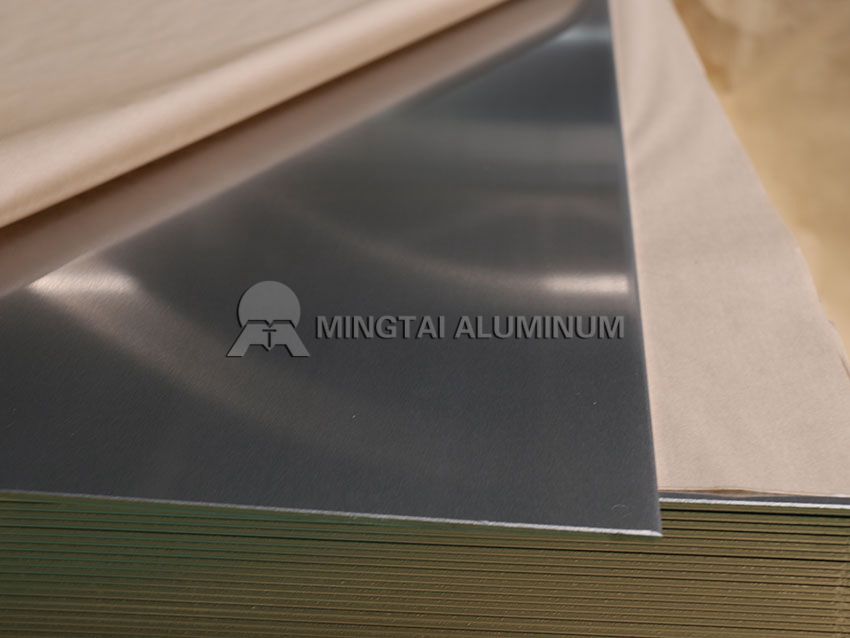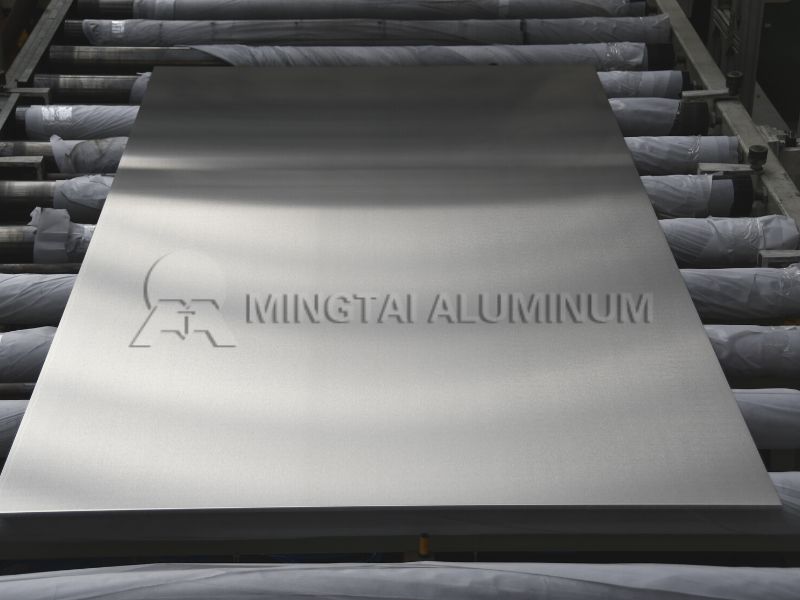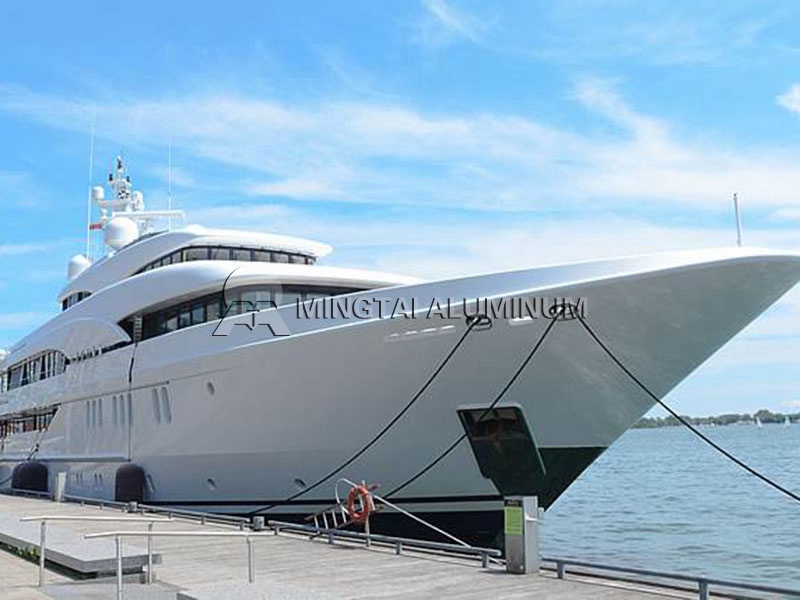
Talking about Marine Grade Aluminum
Sample: A4 Sized
Payment Terms: L/C,D/P,T/T
Delivery time: Within 15-30 Days
Email Us:sale06@mingtai-al.com
Introduction to Marine Grade Aluminum:
Marine Grade Aluminum has 5052 (5A02), 5252, 5154, 5454, 5754, 5083, 5086, 5059, 7A33 alloys and the like. The magnesium content of the 5052 alloy is lower; the magnesium content of the 5154, 5454, and 5754 alloys is moderately lower; the magnesium content of the 5083 alloy is moderately higher; the magnesium content of the 5086 alloy is moderately lower; the magnesium content of the 5059 alloy is the highest.
It can be seen from the Al-Mg binary phase diagram that the solid solubility of Mg in Al is second only to that of Zn, the ultimate solubility at 470 ° C is 17.4%, and only about 1% at room temperature. In theory, Al-Mg alloy should have strong age hardening effect, but the solid phase β (Al3Mg2) is limited by crystal precipitation tendency and dispersion. This hardening has no practical value, so Al-Mg alloy is all annealed. The state (O) and the cold work hardening state (H) are used, which is what we often say, they are a type of deformed aluminum alloy that cannot be strengthened by heat treatment.

Chemical Constituents of Marine Grade Aluminum:
Among the chemical constituents of the aluminum-magnesium alloy of Marine Grade Aluminum, the maximum magnesium content of the 5052 alloy with a low magnesium content is only 2.8%, and the content of the 5083 alloy with the highest magnesium content is 4.9%. Although the strength properties of the alloy increase due to the increase of Mg content, the plasticity and corrosion resistance are significantly reduced. Especially for alloys with Mg>6%, the process plasticity is particularly strong.
Features of Marine Grade Aluminum:
Al-Mg alloy is the most widely used type of deformed aluminum alloy. It is characterized by a density lower than that of aluminum. It has excellent resistance to marine weather and seawater corrosion, weldability and polishability, and excellent plasticity (Mg ≤ 5%). ), also has good seismic performance, fatigue strength is greater than hard aluminum.
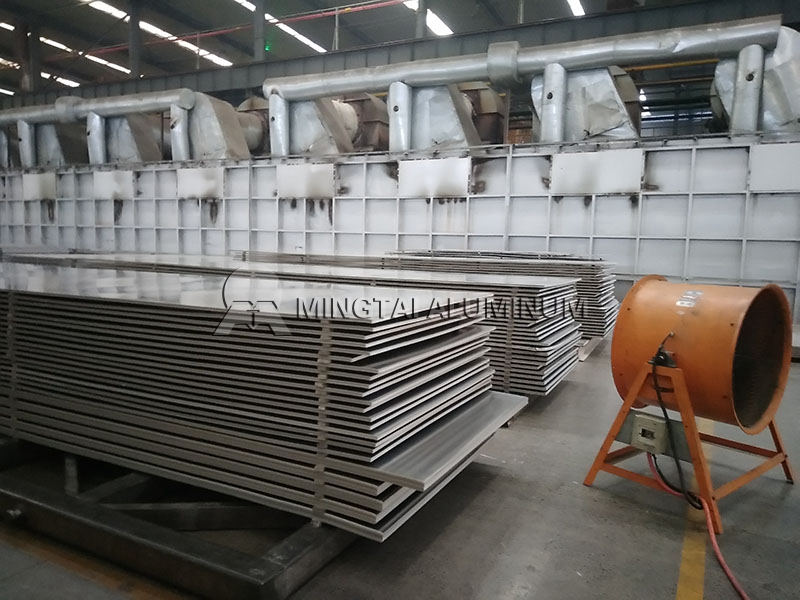
Since Al-Mg alloy has only negligible age hardening and strong intergranular tendency, it can only be applied in annealing (305 ° C ~ 360 ° C) or cold working. However, the excellent corrosion resistance of the Al-Mg alloy can only be exhibited when the β phase is uniformly distributed along the crystal grain and the grain boundary, and the distribution state is closely related to the Mg content. Studies have shown that Mg ≤ 3.0% of the 5052 type alloy is extremely stable, whether it is annealed or cold worked (O, H), heated at room temperature or stabilized (sensitized) temperature (67 ° C ~ 177 ° C) for a long time None of the intergranular β phase network films are formed, and are not sensitive to stress corrosion cracking (SCC) and exfoliation corrosion (EFC). However, after Mg>3.5%, especially for cold-worked plates, although the Mg content is increased (> 5% Mg), the sensitivity to SCC is also strongly increased, even at room temperature for a long time (20a~30a), ie A continuous β phase network film can be formed along the grain boundaries. Because the high Mg (>6%) alloy is fully annealed even at 315 ° C ~ 330 ° C, the α solid solution can not be completely decomposed, still in a supersaturated state, so the structure is very unstable.
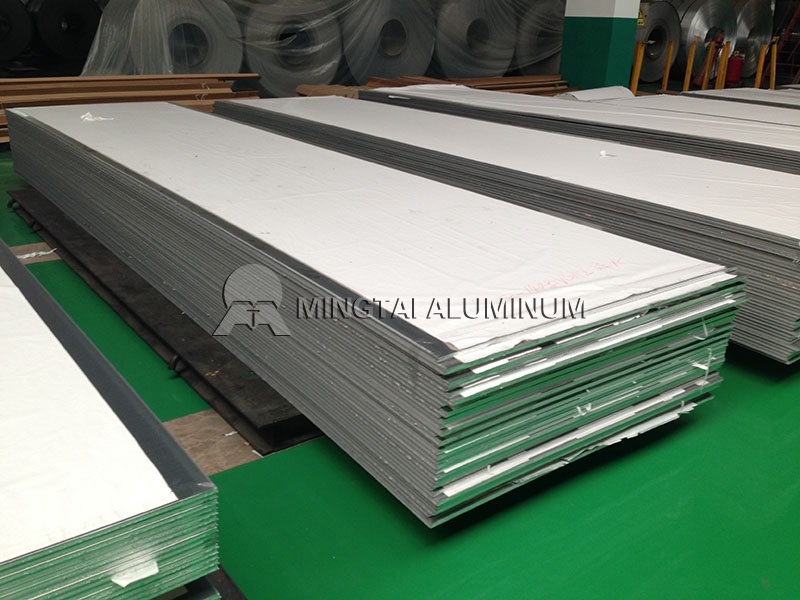
How to Improve the Stability of Marine Grade Aluminum?
Measures to improve the stability of high Mg alloy microstructure: First, large cold deformation (20%~50%) after annealing, increase dislocation density and β phase to form a nuclear point, and annealed at 200 °C to promote α solid solution Fully decomposed and uniformly distributed in the β phase. As long as the precipitation along the crystal phase of the β phase is eliminated, the anti-flaking corrosion performance can be significantly improved; conversely, the cold deformation ≤ 30%, and the annealing temperature < 200 ° C, the crystal structure along the crystal lattice is retained, that is, the stress corrosion cracking sensitivity is Since the potential of the β phase is -1.10 V lower than -0.9 V of the α solid solution (4% Mg alloy) by 0.2 V, it acts as an anode and is easily dissolved preferentially along the β-retinal membrane. The microstructure of the Al-Mg alloy which is analyzed (precipitated) is composed of uniformly dispersed β-phase particles and sub-grains, and has a certain sub-structure strengthening effect; the second is to reduce the magnesium content to ≤3%, and join Appropriate amount of Mn and Cr which can increase the strength and recrystallization temperature can also avoid the precipitation of β phase along the crystal, and obtain the strength equivalent to that of high magnesium alloy. 5454 alloy is one such alloy, its tensile strength and Al-4Mg alloy Equal, without stress corrosion cracking and exfoliation corrosion sensitivity, but this method can not greatly improve the strength of Al-Mg.
Technical Parameters of Marine Grade Aluminum:
| Typical alloy | 5083 aluminum plate;5086 aluminum plate;5059 aluminum plate etc. |
| Material status | O, H12, H14,, H16, H18, H19, H22, H24, H26, H28, H32, H34 etc. |
| Thickness (mm) | 0.15-500 |
| Width (mm) | 20-2650 |
| Length (mm) | 500-16000 |
| Typical product | Boat deck, LNG tanks, Gas tanks, GIS shells, Car skin, Flange materials etc. |





